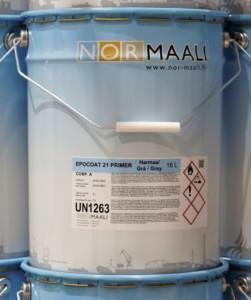In epoxy coatings, health hazards are caused by both the epoxy resins in the paint part and the amine compounds in the hardener. Epoxy resins and amine compounds of epoxy hardeners are significant groups of compounds that cause occupational sensitization. When working with epoxy coatings, both solvent-based and water-borne, it is important to protect the skin carefully, as these compounds can cause allergic contact dermatitis.
EPOXY RESINS

CURING AGENTS OF EPOXY COATINGS
PERSONAL PROTECTION WHEN SPRAYING EPOXY COATINGS
Respiratory protection: If ventilation is insufficient, half- or full mask with gas filter A, and when grinding P-type dust filter must be used. Mask with combined filter (gas & dust) AP must be used when spraying. In the continuous long-term work it is recommended to use motored air protector or separative protector (fresh air hood or compressed air hood or such).
Hand protection: When choosing a protective glove material, penetration times, rates of diffusion and the degradation must be considered. Material of gloves: Wear suitable gloves tested to EN374. May be used, gloves (breakthrough time) 4-8 hours: butyl rubber, nitrile rubber.
Eye/face protection: Tightly sealed goggles. The eye flushing device should be located near the the paint work area.
Body protection: Protective work clothing